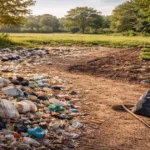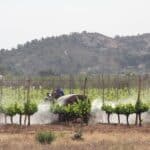Water pollution is a growing global problem that affects millions of people and ecosystems. Contaminants from factories, farms, and households are harming our water sources.
Water pollution leads to serious health risks and damages the environment. Preventing water pollution is crucial for protecting our planet’s future. By taking action, we can ensure clean water for all.
Implementing effective ways to prevent water pollution is not just necessary; it’s our responsibility. We must work together to reduce pollution, conserve water, and protect our precious resources. Every effort counts in making a difference.
Understanding Water Pollution
Water pollution occurs when harmful substances contaminate water bodies like rivers, lakes, and oceans. These pollutants make the water unsafe for drinking, cooking, and supporting life. Understanding water pollution is important because it affects the environment and human health.
It also impacts industries like fishing and tourism, which rely on clean water. Water pollution can be categorized into three main types: chemical, physical, and biological.
Chemical Pollution: This type involves harmful chemicals such as pesticides, heavy metals, and industrial waste. These chemicals can poison aquatic life, making water toxic and unsafe.
Physical Pollution: Physical pollution includes solid waste like plastic, debris, and sediment. It can block sunlight, reduce oxygen levels, and harm organisms that live in the water.
Biological Pollution: Biological pollution is caused by harmful bacteria, viruses, and other microorganisms. It often comes from untreated sewage or animal waste, leading to diseases in humans and animals.
Each type of pollution has its own dangers and must be addressed to protect our water resources. By understanding these types, we can better target our efforts to prevent and reduce pollution, ensuring cleaner water for everyone.
How Water is Polluted?
Water pollution occurs due to both human activities and natural processes. Humans are the leading cause, but nature also plays a role. Pollution from human activities is more common and has a larger impact. However, natural events can also introduce harmful substances into water bodies.
Human-Induced Pollution
Human activities such as industrial waste disposal, agricultural runoff, and improper waste management are major contributors. Factories release toxic chemicals, heavy metals, and other pollutants into rivers and lakes. This waste harms aquatic life and makes water unsafe for drinking.
Agriculture is another major source of pollution. Fertilizers and pesticides used in farming can wash into nearby streams during rainstorms. These chemicals lead to algae growth, which depletes oxygen in the water and kills fish.
Improper waste disposal, like dumping trash and untreated sewage into rivers, also causes significant pollution. This not only contaminates water but also spreads diseases.
Natural Causes
Natural events such as soil erosion, floods, and volcanic activity also contribute to water pollution. Soil erosion, often caused by heavy rains, washes soil and sediment into rivers.
This sediment can block sunlight, harming aquatic plants and animals. Floods can sweep debris, chemicals, and other pollutants into water bodies. Volcanic eruptions release ash and toxic gases, which can contaminate nearby lakes and streams.
For example, the Ganges River in India suffers from heavy pollution due to industrial waste and religious practices. Meanwhile, natural events like volcanic eruptions have polluted rivers in Hawaii. Both human-induced and natural causes highlight the need for strong efforts to prevent water pollution.

Impacts of Water Pollution
Water pollution has severe environmental, health, and economic impacts. The most immediate effect is on aquatic life and ecosystems. Polluted water can kill fish, plants, and other organisms that rely on clean water to survive.
Toxic substances like heavy metals and chemicals disrupt food chains and lead to the loss of biodiversity.
For instance, oil spills can cover the surface of the water, blocking sunlight and preventing photosynthesis in aquatic plants. This lack of sunlight and oxygen can cause massive die-offs in marine life.
The health impacts on humans are also significant. Polluted water is a breeding ground for bacteria, viruses, and parasites. These pathogens can cause waterborne diseases like cholera, dysentery, and hepatitis.
In many developing countries, people who drink contaminated water face severe illness or even death. The lack of access to clean water also affects hygiene and sanitation, further spreading diseases.
Economically, water pollution is costly. Governments and organizations spend billions of dollars on cleaning polluted water bodies. For example, the cost of cleaning the Great Lakes in the U.S. is estimated to be in the billions. Tourism, which relies on clean beaches and lakes, also suffers when water is polluted.
Tourists avoid polluted areas, leading to lost revenue for local businesses and economies. The combined environmental, health, and economic impacts of water pollution highlight the urgent need for prevention and control measures.
Also Read: An Informational Guide to Land Pollution
Ways to Prevent Water Pollution
Preventing water pollution requires a combination of efforts from industries, communities, individuals, and governments. Each of these groups plays a crucial role in reducing the contamination of our water resources.
By adopting effective strategies and practices, we can significantly reduce pollution and protect our water for future generations.
Industrial and Agricultural Practices
Industries and farms are major sources of water pollution. To prevent pollution, these sectors must adopt sustainable practices. Reducing the use of harmful chemicals in manufacturing and agriculture is essential.
For example, using eco-friendly fertilizers and pesticides can minimize chemical runoff into water bodies.
Proper waste management is also vital. Industries should treat wastewater before discharging it into rivers or lakes.
Similarly, farms can implement methods like crop rotation and organic farming to reduce chemical use.
These practices not only protect water but also improve soil health and crop yields.
Community and Individual Actions
Communities and individuals have a significant impact on water pollution prevention. Simple actions like conserving water and properly disposing of waste can make a big difference.
People should avoid pouring chemicals, oils, or medicines down the drain, as these can contaminate water.
Participating in local clean-up efforts, such as beach or river clean-ups, helps remove pollutants and raises awareness about the importance of keeping water clean.
Educating others about pollution and its effects can also inspire more people to take action.
Government Policies
Government regulations and policies are critical in the fight against water pollution. Laws that limit the discharge of pollutants and enforce proper waste disposal are essential.
Governments should also invest in public awareness campaigns to educate citizens about water pollution and prevention methods.
By enforcing these regulations and encouraging sustainable practices, governments can help protect water resources on a larger scale. Public support and compliance with these policies are key to their success.
Conclusion
Preventing water pollution is crucial for protecting our environment, health, and economy. By adopting sustainable industrial and agricultural practices, conserving water, and properly disposing of waste, we can significantly reduce contamination.
Government policies and regulations also play a vital role in ensuring that water resources are protected. However, real change requires collective effort. Every individual, community, and organization must work together to combat water pollution.
Now is the time to act. Simple actions, like reducing chemical use and participating in clean-up efforts, can make a big difference. Let’s commit to these steps and protect our water resources for future generations. Every small effort counts.






